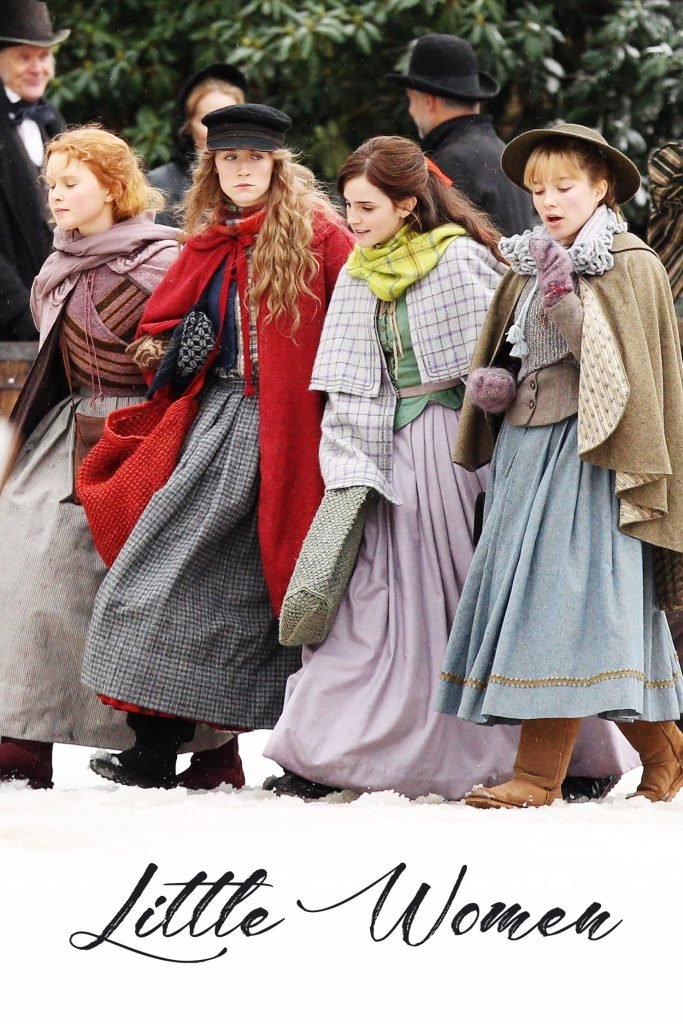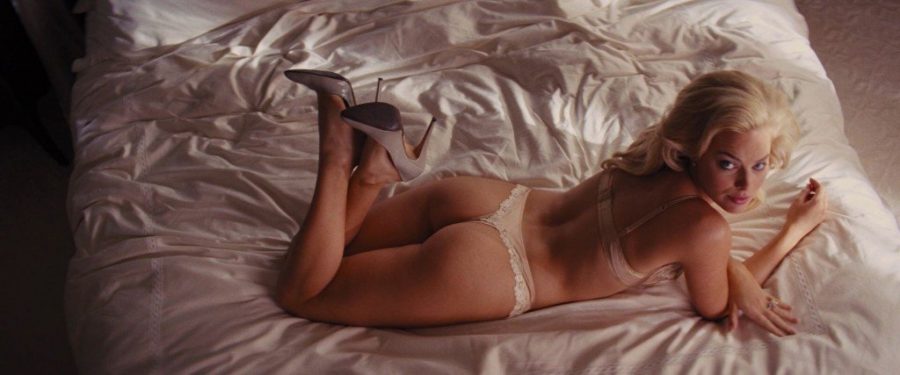“Male Gaze,” first theorized by Laura Mulvey in her seminal work “Visual Pleasure and Narrative Cinema” (1975), was a critical consideration that faced the portrayal of women in visual media from the point of view of heterosexual male desire. This frame objectifies women, setting them up as passive objects of male viewers rather than agents of action within a narrative. Mulvey emphasizes that traditional cinematic techniques reinforce patriarchal ideologies by aligning the camera’s perspective with male protagonists’ desires, marginalizing female subjectivity (Mulvey, 2006). The persistence of this gaze shapes both media and societal perceptions of gender roles.
Margot Robbie in The Wolf of Wall Street
One such example could be found in Martin Scorsese’s The Wolf of Wall Street from 2013, in which, quite frankly, the male gaze is pretty well in function. Naomi Lapaglia, played by Margot Robbie, has her character introduced through a shot made to accentuate her ‘body-beautiful’ aspect: slow pan, lingering shots, and all the other various elements which stressed the body. She often acts like an object of desire for the male protagonist Jordan Belfort, played by Leonardo DiCaprio, rather than an independent figure with agency.
Robbie herself referred to the heavy sexualization of her character as demanding and fully representative of the industry’s tendency to boil female characters down to nothing but visual props. With such a portrayal, one imagines only the limited function in the narrative of Naomi; others reinstate stereotypes of women’s roles in male-dominated spaces as decorative or subsidiary.
Cultural Impact of the Male Gaze
The male gaze places its influence on films and diffuses into societal expectations. It has been shown that viewing repeated exposures of women in media in an objectified manner can lead to internalized objectification among women viewers, which may cause problems like low self-esteem and increased body dissatisfaction (Ross, 2009). For male viewers, perhaps they come away with reductive views of women, perpetuating gender inequality in many social and professional places.


Moving Beyond the Male Gaze
This male gaze has been countered through efforts, most especially On the other hand, efforts toward de-diffusion of the male gaze have been strengthened mainly through feminist filmmaking. Through movies by Greta Gerwig, Lady Bird (2017) and Little Women (2019), the greatest challenge towards patriarchal visual norms came with centralizing the stories on the woman’s life and emotions, not on her appearance. The #MeToo movement also created awareness about ethical storytelling and equal gender representation in media, which called for filmmakers to work more towards inclusive practices.
Conclusion
While the male gaze may be the pervading gaze in media, critiques leveled against it and the building of other gazes-the female gaze, for example-portend a change in the landscape. It is critical media literacy that has enabled both the audience and artists to offer resistance to reductionist portrayals and work toward greater levels of equity in the way gender is represented.
References
- Mulvey, L. (2006). “Visual Pleasure and Narrative Cinema.” In Durham, M.G. & D. Kellner (Eds.), Media and Cultural Studies: Key Works. Malden, MA: Blackwell.
- Ross, K. (2009). Gendered Media. London: Routledge.


Hiii!
This blog explores the concept of the “male gaze”, noting that it shapes the image of women by objectifying them as passive objects of male desire. The article uses “The Wolf of Wall Street” as an example to show that Margot Robbie’s character is reduced to a visual prop. The blog also discusses the cultural impact of the male gaze, noting that it leads women to internalize objectified images and exacerbates gender inequality.
However, it highlights positive changes through feminist filmmaking, such as Greta Gerwig’s Lady Bird and Little Women, which focus on women’s emotions. The #MeToo movement has also raised awareness about gender representation, emphasizing the need for more inclusive portrayals in media.
Overall, you wrote a great blog😄
Hi Xiangming,
I think you did a good job of highlighting Male Gaze by uniting it with Mulvey’s therie. it’s a great post but if i could suggest anything, it would be to add a party denouncing the critique of these counter efforts. Like the film Lady Bird and little women which are glorified for upsetting traditional narratives,Some advocates of the feminist perspective feel that focusing on women’s lives and emotions can have unintended consequences that reinforce the distinction between male and female perspectives, instead of advocating a more inclusive vision of gender. How do these films appeal to audiences outside the feminist perspective and risk being seen as women’s stories? overall you did a good post!! I’ve enjoyed reading it.
I think this blog is a great exploration of the impact of the male gaze on the media and gender roles in society, especially the objectification of Margot Robbie’s character in the movie The Wolf of Wall Street. The article points out that this gaze not only limits the development space for female characters, but also exacerbates gender inequality. At the same time, the blog also highlights the importance of feminist filmmaking and the #MeToo movement in challenging the traditional male gaze and promoting equal gender representation. This is a powerful argument to remind us that changes in gender representation in the media require our continued critique and work. Very good!!!
The article effectively highlights the lasting impact of the male gaze in media and its harmful effects on both women and men’s perceptions of gender roles. It also emphasizes the importance of feminist filmmaking and movements like #MeToo in challenging these traditional portrayals and advocating for more equitable representation of women.